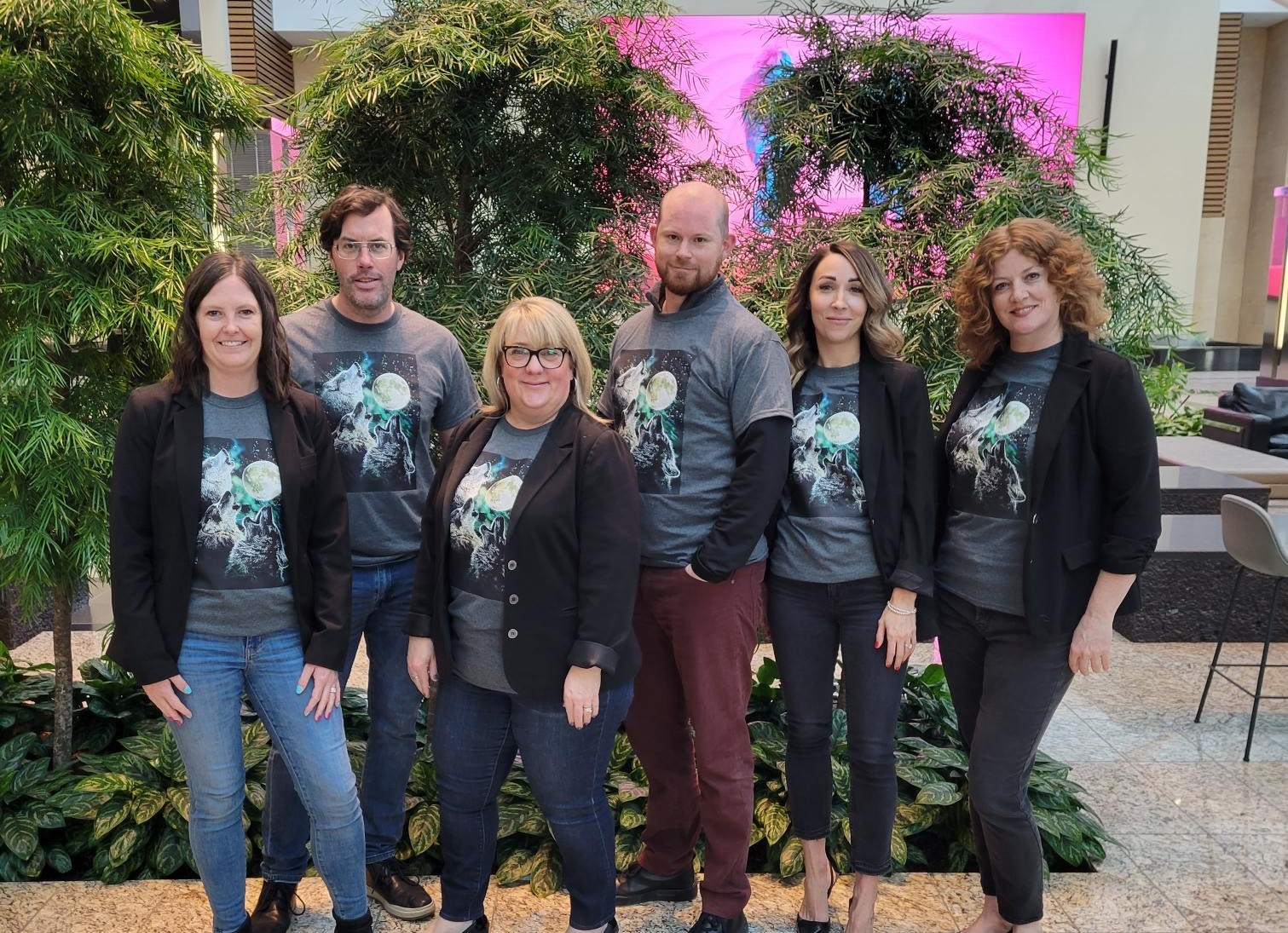Working behind the scenes of every oil and gas operation, there is a team of people whose days are spent turning project ideas into reality. At Pieridae, our land department is only a team of six, but the close-knit group works efficiently to meet the complex and continually evolving needs the company.
The land department’s basic function is to manage the rights for the company to produce, transport, process, and sell hydrocarbons. The day-to-day work for the department, however, is far from basic.
Mark Darrah acts as both Mineral Land and Joint Venture Manager. “I always tell people when they ask, ‘What is a landman?’, I’m a bit of a real estate agent but subsurface. On the flip side I’m also like a cruise ship director, trying to get all the various interests within the company to work together for the purposes of one goal.”
From an upstream perspective, the land department is tasked with responsibilities such as buying and selling mineral land rights, negotiating surface land access, and drafting and managing the contracts that lay it all out. This work and their other responsibilities require the team to have an extensive base of regulatory knowledge and the ability to interpret data from the complex reports of geoscientists, governing entities, and legal professionals.
Beyond exploration and production, Pieridae’s operations also cover midstream activity where the land department’s work moves into the realm of joint ventures.
“Joint venture is everything from the wellhead out,” says Mark. “That includes pipelines, compressors, gas plants, you name it. It’s a complex contractual world that governs the ownership of these assets.”

Pieridae’s Land Department: Nicky Stegmeier, Senior Surface Coordinator; Mark Durrah, Manager, Land and Joint Venture; Fawn Ellis, Senior Contract Analyst; Rich Rowe, VP Land; Lauren McKellar, Joint Venture Analyst; Laurene Palmiere, Analyst, Mineral Land.
Much of our midstream assets (i.e., the physical infrastructure that processes raw production into saleable hydrocarbon products) are joint ventures. Their operation is a collaboration between two or more companies with similar interests and the companies all own a portion of the asset. Contracts dictate how big each partner’s working interest is, how partners work together, who is responsible for what, and other rules that must be followed.
The majority of oil and gas operations globally are joint ventures. These collaborative projects split the risks and costs between partners. They allow for each company to access the technology, expertise and ideas of its partners.
These relationships can also make things tricky for the team. Not all partners will always agree on the best path forward, which makes midstream strategizing a more committed endeavor. The team must pair their industry expertise with interpersonal skills to come to these types of deals that benefit all.
Mark describes Pieridae’s 2019 asset acquisition deal with Shell as a shining moment for the land department. The deal brought in our three major gas complexes, a 1,700-kilometre pipeline network and 282 wells spanning over several hundred thousand of acres of surface land in the Foothills – establishing us as major players in the Alberta energy industry and as the largest Foothills producer.
“We were able to bring these assets in, and manage them,” he explains. “Through acquisitions we’ve been able to grow the assets, and through dispositions we’ve been able to focus the assets a little bit better. That is probably our biggest accomplishment – not just taking in this large, large asset, but managing it effectively.”
In a constant state of collaboration between financial partners, government regulators and most departments within the organization, there is rarely a slow day in the world of the Land Department. They operate in the space between all the moving parts and varying interests, bridging the gaps between the entities that govern our ability to produce and sell natural gas, to power people’s lives across the country.
“It is an interesting role,” Mark says. “And a pretty exhilarating one.”